All about bindweed

Bindweed - unpretentious, fast-growing and vigorous vines that can decorate even the most unsightly corners of the summer cottage... They are used to decorate trellises and pergolas, wastelands, fences, walls of country houses and outbuildings. What are these unusual plants? What types and varieties of them are used in ornamental gardening? What are the nuances associated with the cultivation of bindweed on the site?
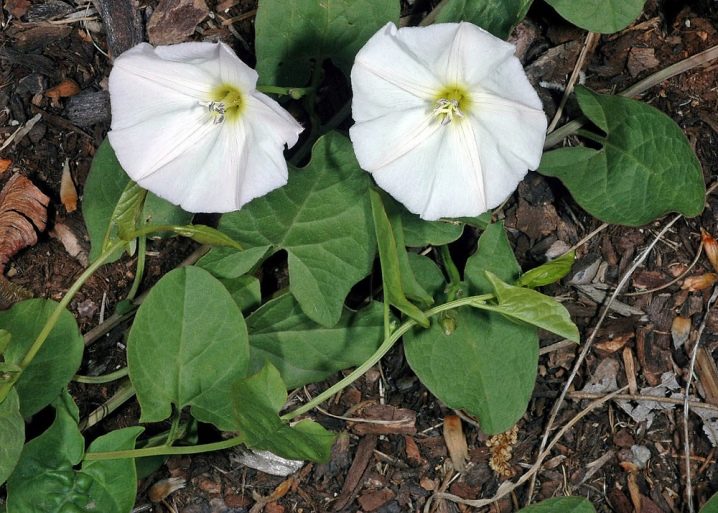
Description
The genus bindweed includes about 75 varieties of annual and perennial plants, which are members of the bindweed family. In ornamental gardening, this flower crop is most often grown as a summer plant - a plant of one summer season.
Most bindweed have branched, thin, very flexible stems that creep upward or creep along the ground. The length of the shoots of an adult plant can reach several meters. In some ornamental varieties, the length of the shoots varies between 40-50 centimeters.
Bindweed have a fairly strong, creeping, highly branched rhizome, located relatively close to the surface of the earth. Leaves - obovate, lanceolate or spear-shaped, saturated green uniform color.
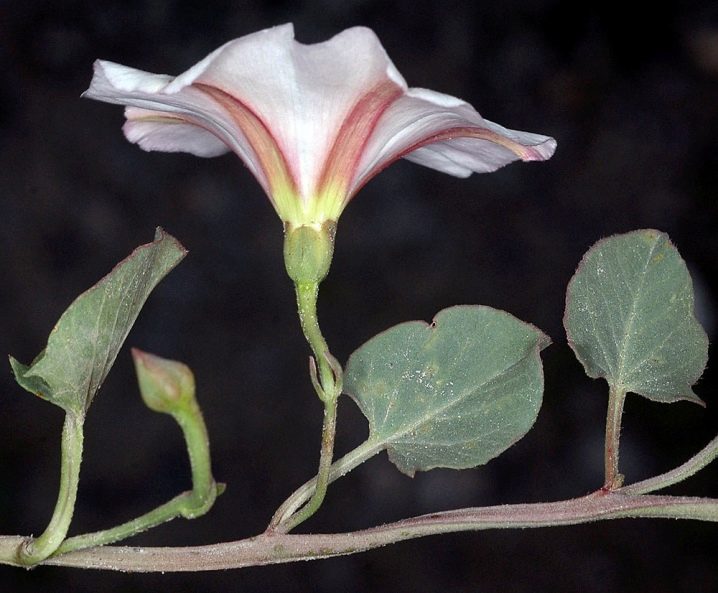
Plants enter the flowering period around the middle or late spring. Flowering in most species continues until the onset of frost.... Throughout almost the entire growing season, bindweed decorate numerous funnel-shaped "gramophone" flowers, exuding a subtle, pleasant aroma.
The color palette of bindweed flowers is extremely diverse. - in it you can find absolutely white, and pale pink, and deep purple, and turquoise blue, and lilac shades. Moreover, by the efforts of breeders to date, very effective varieties have been bred, the flowers of which are striking not only by their originality of color, but also by their very large sizes.
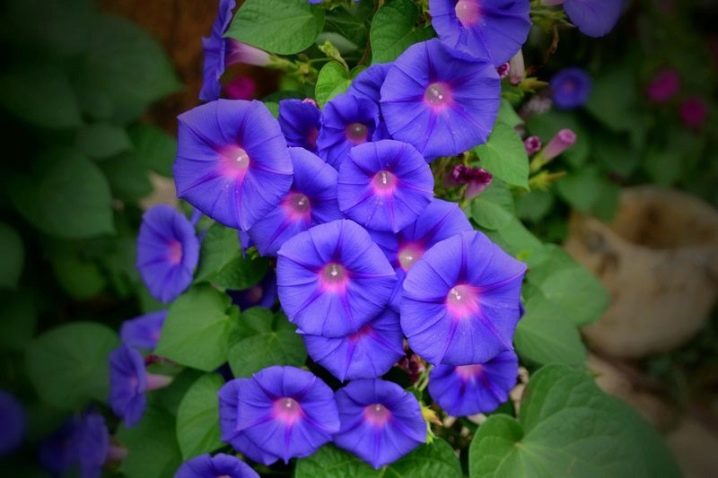
At the end of flowering, fruits are formed on the bindweed - small seed bolls of light brown or brown-brown color. In most species, the shape and size of the seeds visually slightly resemble small buckwheat (with the exception of color - in bindweed, the seeds are usually brown-black in color). Seed germination after collection is maintained for 2-3 years.
Bindweed reproduces excellently by self-seeding. If you do not interfere with this process, then over time, plants can fill the entire area, straying into lush clumps. In addition, some bindweed and root suckers reproduce well.
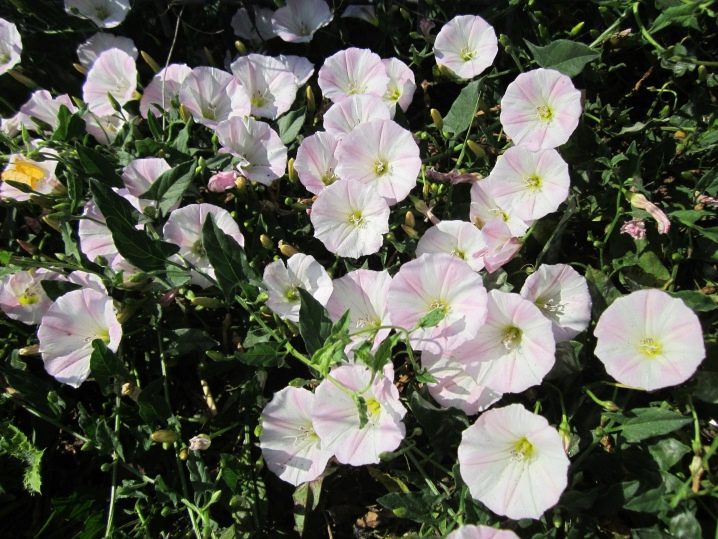
In ornamental gardening, these vines are widespread and actively used, due to their unpretentiousness, drought and cold resistance. Even outside the flowering period, bindweed look quite impressive thanks to its exuberant emerald foliage and graceful long shoots.
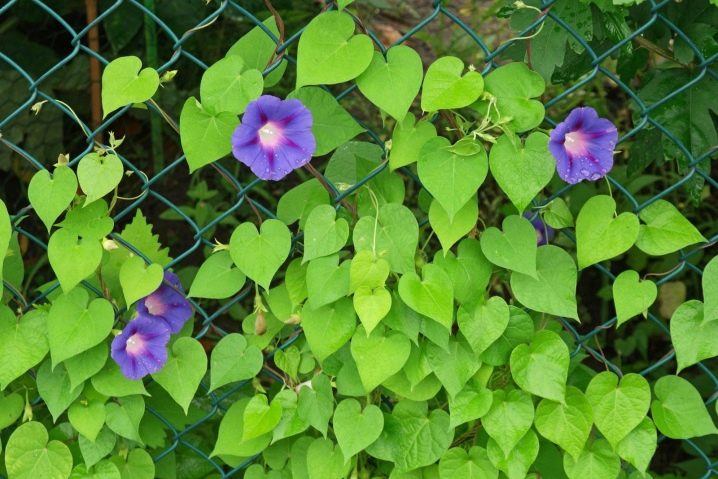
Popular species and varieties
In the landscaping of personal plots, gardeners and landscape designers use both wild species and cultural forms of bindweed. Below are the names and descriptions of the most popular varieties and cultivars that can be found in modern gardens.
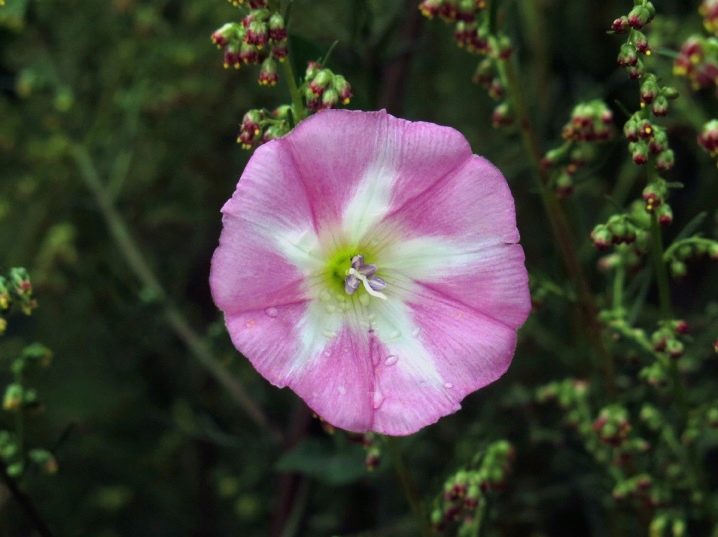
Field
This wild variety of herbaceous perennial is widespread in Russia. The plant has long twisted stems and strong, highly branched rhizomes.It is noteworthy that a powerful root system provides the plant with a high survival rate, therefore this type of bindweed is considered a rather aggressive weed and is widely exterminated by gardeners. The flowers of the plant are funnel-shaped, medium-sized (up to 2-3 centimeters in diameter), white or pale pink in color with darker, narrow, longitudinal veins running from the core to the edges of the petals.
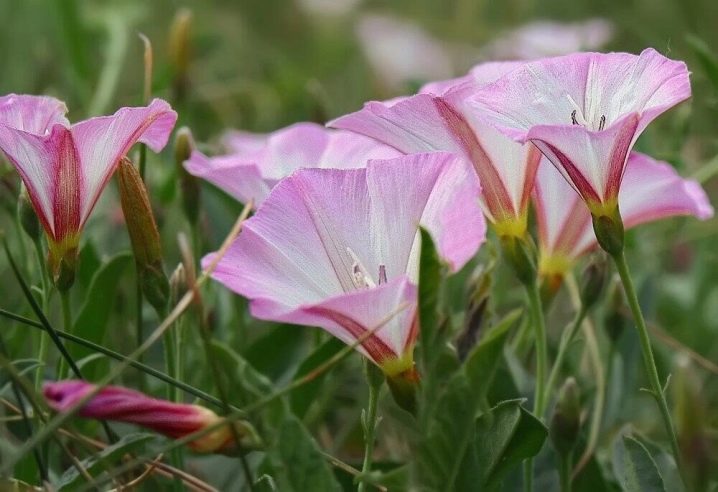
Garden
This cultural form is often used by landscape designers in vertical and conventional landscaping - with the help of garden bindweed, they decorate pergolas and arches, decorate fences and zone various parts of the garden. It is worth noting that the small length of some garden varietal bindweed allows them to be used both as outdoor plants and as a pot culture grown on the balcony. A characteristic feature of garden bindweed is a variety of colors and rather large sizes of their flowers.
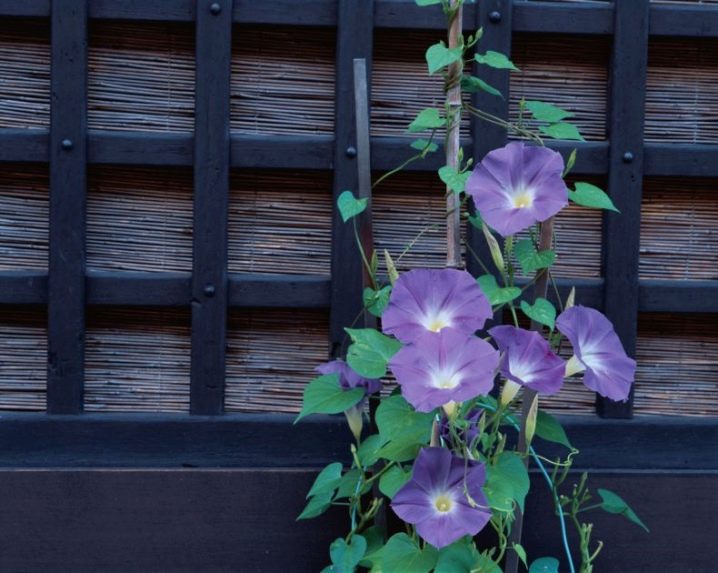
The Moorish bindweed is a variety of climbing garden vines, notable for its dense gray-green foliage and luxurious lilac flowers. The length of shoots of plants of this species usually does not exceed 0.5 meters, which makes it possible to grow a crop not only outdoors, but also indoors. A very unpretentious and attractive variety of Moorish bindweed is very popular among gardeners. Early blue, which has a very compact size and rich lilac flowers, reaching 3 centimeters in diameter.
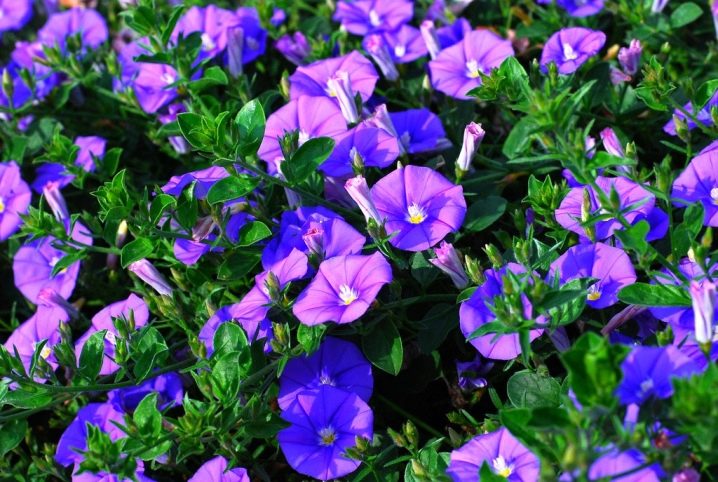
In indoor and container plant growing, another garden variety of the Mauritanian bindweed has become widespread - Upright Blue. The length of the shoots of an adult plant varies within 10-30 centimeters, the leaves are round, ovoid, dark green, reaching 3-4 centimeters in length. Flowers - funnel-shaped, deep lavender shade with a light heart. The plant is ideal for both outdoor and home cultivation.
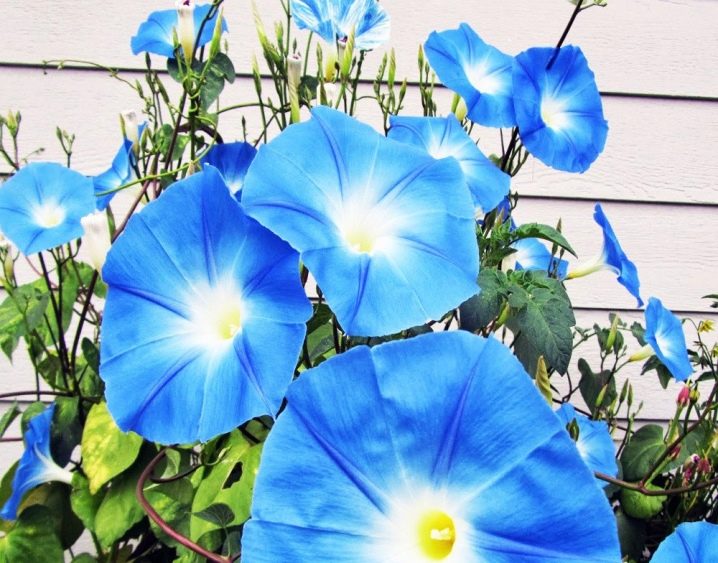
Two-peaked (or two-peaked) bindweed - a wild and unpretentious variety that has been popular among modern gardeners in recent years. The plant is characterized by high endurance, unpretentiousness, the ability to take root even on poor, infertile soils. The length of its creeping stems usually does not exceed 40 centimeters.
Leaves are pale green, arrow-shaped, solitary. Flowers - ordinary, funnel-shaped, small, with a pale pink color.
It is noteworthy that this type of bindweed does not form lush clumps, therefore, it is most often grown as a potted ampelous plant, and not as a ground cover.
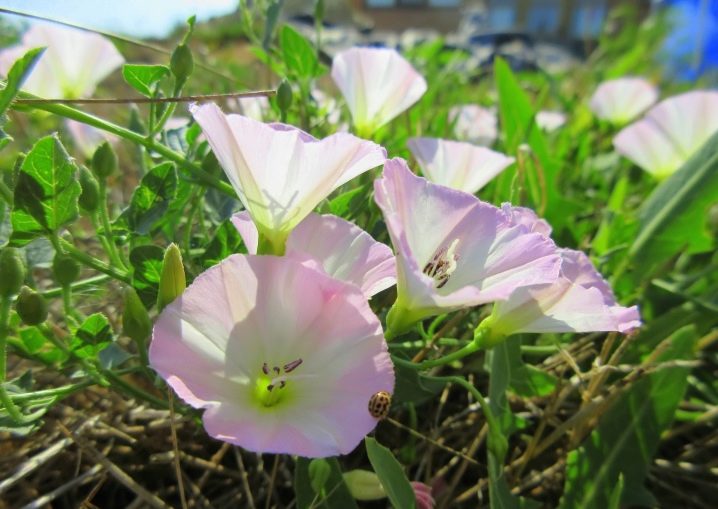
Tricolor
This is an original variety of climbing perennials that many gardeners usually grow as an annual. In an adult plant, the length of the shoots reaches 35-50 centimeters. Leaves are narrow, xiphoid, pointed, light or gray-green in color, pubescent. The flowering phase begins around June and ends in early autumn. The flowers are funnel-shaped, with wavy edges. The center of the flower is bright yellow, framed by a narrow white stripe. At the edges, the flowers have a rich ultramarine color.

One of the most popular varieties of tricolor bindweed is Mosaicsuitable for growing in pots and containers, and for growing in the open field - in flower beds and ridges. The plant reaches a height of only 18-20 centimeters. The flowers are spectacular, tricolor, reaching 6 centimeters in diameter. The bindweed of this variety blooms in June, and finishes flowering in early autumn.
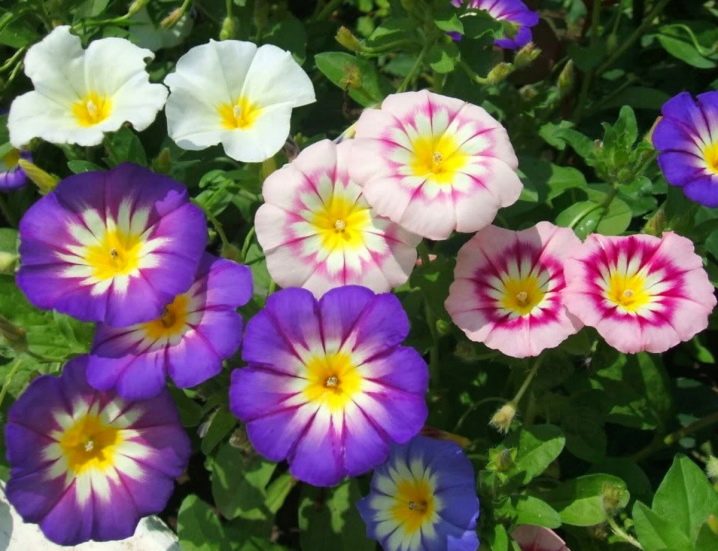
Other
In ornamental gardening, other representatives of the bindweed family are also actively used - morning glory and calistegia. Some summer residents mistakenly attribute these plants to ordinary bindweed, despite the fact that they are two different, independent genera.
Ipomoea is often called "the queen of annual vines"... The length of the stems of this vigorous climbing plant can reach 3 m or more.The leaves are large, glossy on the outside, emerald green in color, heart-shaped. The flowers are large, funnel-shaped. The color of the flowers depends on the species and varietal characteristics of the plant. The palette of blooming morning glories is very diverse and includes porcelain white, pale pink, lavender, purple, inky purple shades. In ornamental horticulture, morning glories are widespread with both simple monochromatic and original variegated flowers.
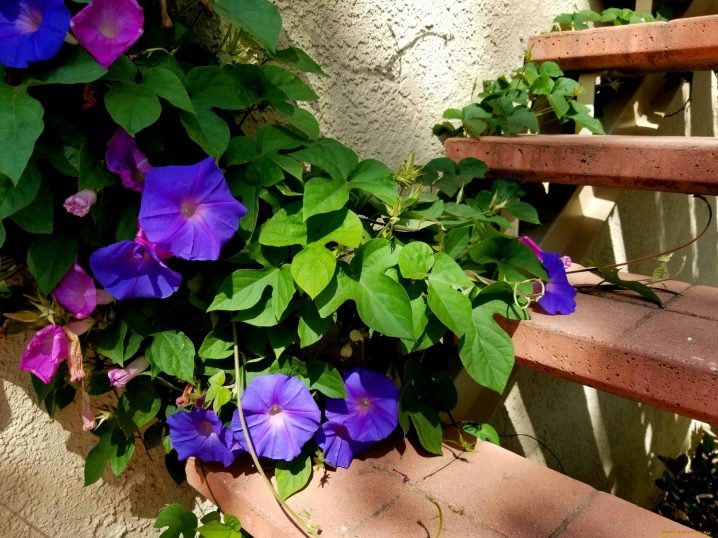
Persian bindweed - a very unusual wild-growing species found on the territories of the sandy beaches of the Black and Caspian Seas. The plant is a compact shrub with many leafy, rising stems. Leaves are round, silvery-green, pubescent. The flowers are funnel-shaped, snow-white with a bright yellow core.
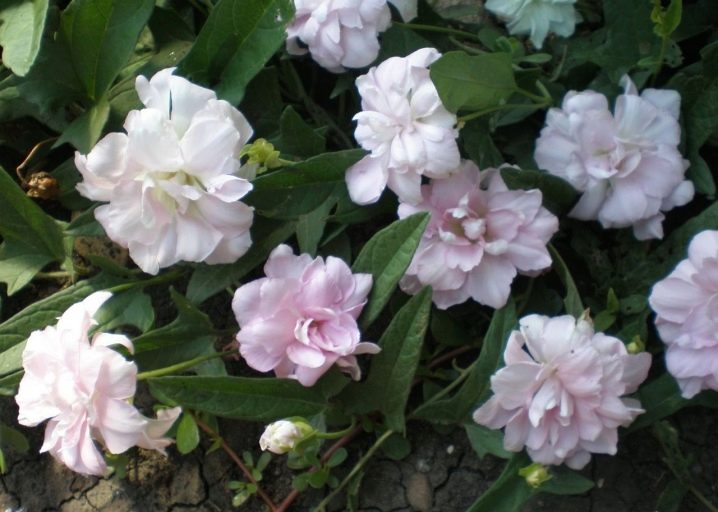
Calistegia (another name of the genus - new) is a herbaceous curly perennial with weak, but long stems (up to 2-3 meters) and a strong, creeping rhizome. Leaves are heart-shaped or spear-shaped, bright green, slightly wrinkled. Flowers - bell-shaped, with a wavy edge, bright white, pale pink or pinkish-lilac color. An interesting variety of calystegia with spectacular double flowers (Calystegia hederacea) is very popular among gardeners.
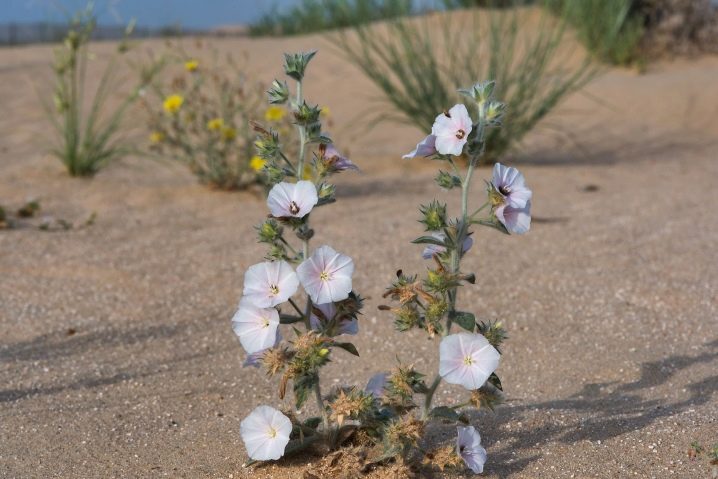
Landing
It is advisable to plant bindweed in well-lit places, protected from drafts. When grown in the shade, plants quickly lose their decorative effect during flowering. The place reserved for planting is pre-dug up, simultaneously introducing loose peat into the soil (about 2 kg per 1 square meter).
The bindweeds are not very demanding on the soil composition - they take root well both on loams and on loose sandy soils.
However, fertile, well-drained soils with a high humus content are best suited for them. On such soils, plants develop faster, get sick less often, and bloom more effectively and for a long time.

The distance from the bindweed, fixed on a vertical support, to other green inhabitants of the garden should be at least 25 centimeters. If the plant is planned to be grown as a ground cover, then it should be planted at a distance of 40-45 centimeters from nearby horticultural crops.
It is recommended to plant seedlings of decorative lianas by the "transshipment" method, trying not to damage the clod of earth on the roots. After planting, the plants are watered and then mulched around the stems.

Care
Bindweed, for all their unpretentiousness, need regular and abundant watering. To the greatest extent, this need for them increases during the flowering period and in dry seasons. Under normal weather and temperature conditions, plants are watered about once every 2-3 days. In a very hot and dry summer, vines are watered every other day, strictly in the morning or evening hours.
2-3 weeks after planting in a permanent place, young plants are fed with fertilizers with a high nitrogen content. During the period of bud formation and flowering, bindweed are provided with regular feeding with a high content of potassium and phosphorus.
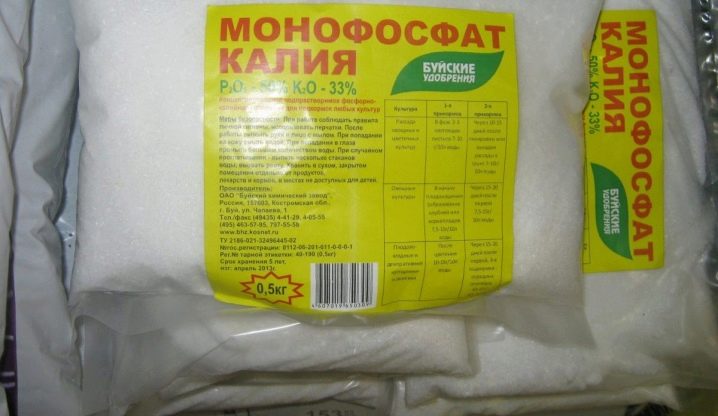
To maintain abundant, lush and long flowering, gardeners recommend feeding the lianas with Fertika Lux complex fertilizer once every 1-2 weeks.
Throughout the growing season, it is necessary to timely clean the plantations of weeds. The abundance of weeds around the vines not only negatively affects their growth and flowering quality, but can also cause the development of diseases.
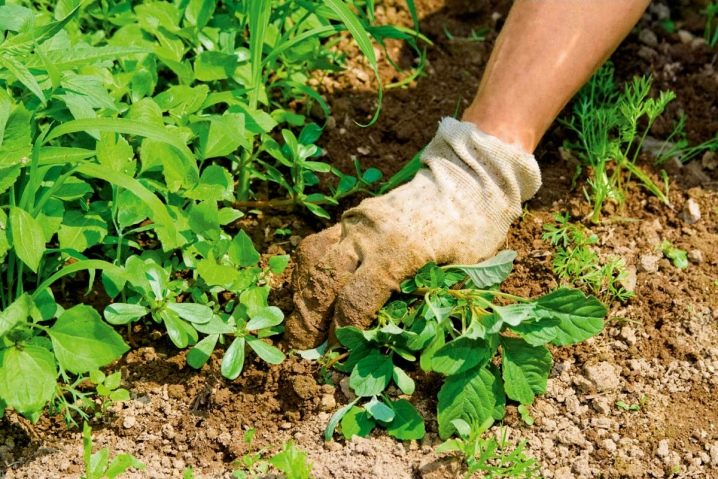
Reproduction
The easiest way to breed bindweed is seminal... Planting material is sown in March-April, given that young plants grow in length rather quickly. It is better to plant the seeds in separate containers or cups filled with soil for flower seedlings. It is undesirable to sow seeds in a common container, since in the future this will complicate the extraction of seedlings during transplantation.
Seeds are planted to a depth of 0.5-1 cm, after which they are sprinkled with a thin layer of earth, watered abundantly and covered with a film. After emergence (10-14 days), the film material is removed.
In natural, natural conditions, wild species of bindweed reproduce root shoots... However, gardeners do not tolerate such plants on cultivated areas, due to their ability to aggressively grow and displace other, weaker crops.
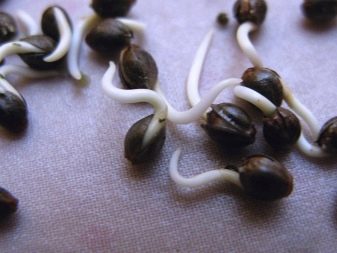
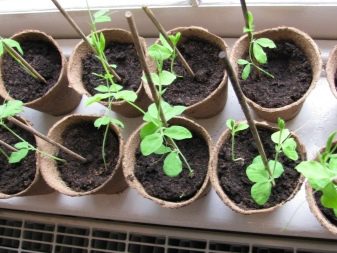
Diseases and pests
Stable rainy weather, thickening of plantings, waterlogging of the soil or a high content of nitrogen-containing compounds in it are the main reasons for the development of powdery mildew on bindweed. Its characteristic features are off-white spots on the leaves and shoots of the plant.
In this case, it is possible to cure the injured liana with the help of fungicides - "Fundazola", "Topsina-M".
In unkempt areas, cultivated crops, including bindweed, are often affected by aphids. You can find this tiny pest on the seamy side of the leaves. Lianas, affected by aphid colonies, begin to noticeably lag behind in growth, dry out, turn yellow, shed their buds and flowers. Systemic insecticidal preparations - "Fufanon Nova", "Biotlin", allow to destroy this parasite.

Application in landscape design
Vigorous garden bindweeds are used by landscape designers to decorate vertical supports, decorate the walls of buildings and fences, gazebos and summer verandas. With their help, they fill the empty corners of the garden, where they, spreading along the ground, get lost in lush flowering carpets.
Medium-sized vines look great in ampelous single and group compositions. They, along with undersized decorative bindweed, are used in the arrangement of flower beds, borders, rabatok. These flowering plants look original in rock gardens, where they are combined with other low-growing crops - saxifrage, subulate phlox, heather.
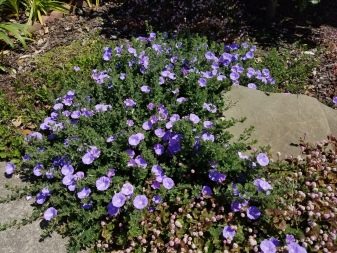

How to get rid of the garden?
Field bindweed is considered one of the worst weeds that displace cultivated plants from the site. It is extremely difficult to fight this loach due to its high survival rate. Even a small fragment of the rhizome of this weed can quickly give a new generation of plants.
In order to remove the field loach from the garden, in spring and autumn, summer residents dig deep into the plot, carefully reviewing clods of earth and removing even the smallest fragments of roots from them. A thorough spring digging with further cover of the cultivated land with dense, opaque material helps well in the fight against the plant.

Under such a shelter, young shoots of the weed do not receive the moisture and light they need, as a result of which they quickly die naturally.
Herbicides should be used with caution - these preparations are recommended to be used only in the most extreme cases and on condition that there are no cultivated plants on the site that may be damaged. To exterminate the weed, the preparations "Linder", "Tornado", "Roundup" are used.
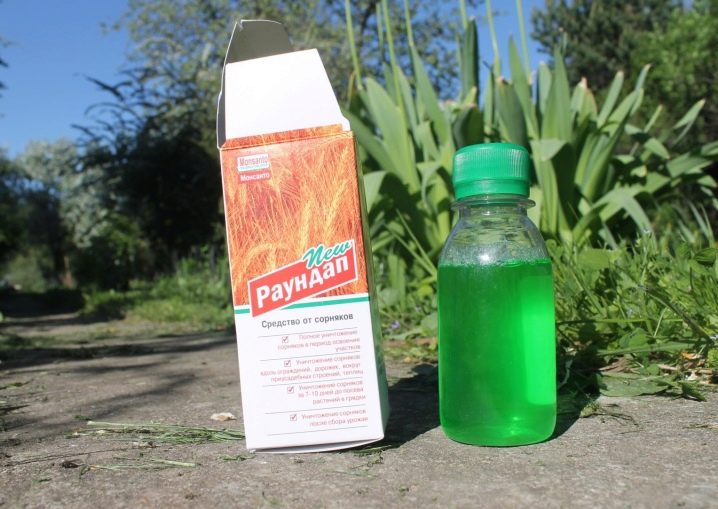







































































































The comment was sent successfully.